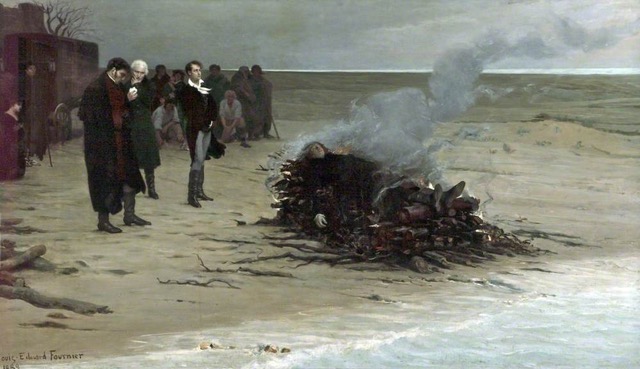The 29-year-old English poet Percy Bysshe Shelley, an experienced sailor, drowned in a storm in the Gulf of La Spezia, off the west coast of Italy. Accompanying Shelley in his boat, the Don Juan, were his friends: Edward Williams, a retired army officer; naval officer Daniel Roberts; and their 18-year-old boat boy, Charles Vivian. All perished, and Vivian’s body was never recovered. They were sailing from Livorno to Pisa, near to which Shelley and his wife, Mary, author of Frankenstein, were renting a house.
On 18 July, Shelley’s body washed up at Viareggio. It was identified by his friend, the biographer and novelist Edward Trelawny, who recognised his clothes and the copy of John Keats’ volume of his poems tucked in his pocket. Due to Italian quarantine rules, Shelley was immediately buried on the beach by the authorities. A month later, on 16 August, his body was exhumed by Trelawny, Leigh Hunt and Lord Byron, and cremated on Viareggio beach. His ashes were later interred at the Protestant Cemetery in Rome, near the grave of Keats. The Gulf of La Spezia is now known—after Shelley, Byron and other poets who loved the area, such as Dante and Petrarch—as the Bay of Poets.
Image: An idealised representation of Shelley’s funeral in Louis Édouard Fournier, The Funeral of Shelley, 1889. Oil on canvas, Walker Art Gallery, Liverpool. In reality, it was an extremely hot day and Mary Shelley, kneeling, did not attend the cremation.

